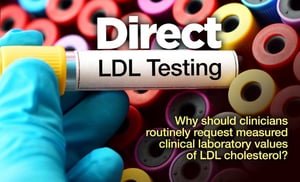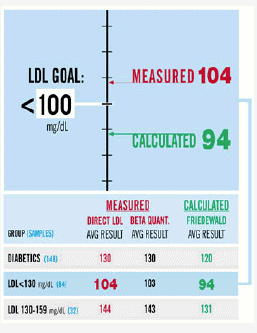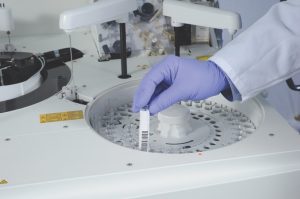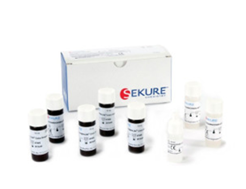 This year on World Heart Day (September 29th), the World Heart Federation is asking for a simple promise: Eat more healthily, get more active, and say no to smoking. But as you know, it’s vitally important to recognize every day, not just on World Heart Day, that cardiovascular disease (CVD) isn’t simple, and is the world’s number one killer: over 17 million people die of cardiovascular disease every year. What many people don’t realize as they go about their day-to-day lives is that this disease is in fact 80% preventable. That’s right—80%!
This year on World Heart Day (September 29th), the World Heart Federation is asking for a simple promise: Eat more healthily, get more active, and say no to smoking. But as you know, it’s vitally important to recognize every day, not just on World Heart Day, that cardiovascular disease (CVD) isn’t simple, and is the world’s number one killer: over 17 million people die of cardiovascular disease every year. What many people don’t realize as they go about their day-to-day lives is that this disease is in fact 80% preventable. That’s right—80%!
According to the American Heart Association, heart and blood vessel disease (also called heart disease) includes numerous problems, such as heart attack, stroke, heart failure, arrhythmia, and heart valve problems. Small changes, such as increasing physical activity, decreasing tobacco use, and reducing your sodium intake can help improve your health and prevent CVD.
World Heart Day
The World Heart Federation founded World Heart Day in 2000. It is the world’s biggest platform for raising awareness about CVD. The organization’s aim is to reduce premature deaths from CVD by at least 25% by 2025.
This year, on and around September 29, thousands of activities and events are planned all around the world. World Heart Day serves as a global platform to raise awareness about this global killer.
Narrowing Our Focus: Testing
Our potential topics about CVD are endless—causes, cholesterol, smoking, diet, symptoms, diagnosis… On World Heart Day, Sekisui wants to remind people of the reasons why healthcare professionals should request a measured LDL cholesterol test result rather than relying on an estimated value found using the Friedewald Formula. According to the American Heart Association, LDL is the “bad” kind of cholesterol, so a low LDL level is considered good for your heart health. Doctors consider LDL levels as one factor among many when evaluating cardiovascular risk.
A measured test trumps an estimated test for several reasons.
- Is estimated by calculation
- Requires multiple assays and multiple steps, each adding a potential source of error
- Is inaccurate as triglyceride levels increase
- Requires that patients fast for 12 to 14 hours prior to specimen collection to avoid a triglyceride bias
- Is not standardized
But The Estimate is Free!
Customers ask, “Why should I pay for a test when the Friedewald Formula is free?” Surely the estimate is good enough, right? But labs that use a direct measured LDL method, such as Sekisui Diagnostics’ N-geneousâ LDL Cholesterol Reagent, know that there are errors in using the formula and want to give patients the most accurate results possible.
 As you know, accuracy is crucial because the LDL result, along with other factors, is used to determine and monitor a patient’s risk of developing coronary heart disease. The Friedewald calculation simply isn’t good enough and leads to errors in estimating a patient’s risk. For example, consider this graphic:
As you know, accuracy is crucial because the LDL result, along with other factors, is used to determine and monitor a patient’s risk of developing coronary heart disease. The Friedewald calculation simply isn’t good enough and leads to errors in estimating a patient’s risk. For example, consider this graphic:
The average LDL cholesterol values estimated by the Friedewald method were significantly lower than the average values obtained by the direct, measured methods. The calculated method placed the average below 100mg/dL, appearing within the desired range. The values obtained by the MEASURED methods placed the average above the LDL goal of 100mg/dL – outside of the desired range. These results could necessitate significantly different paths for the patient!
Every day, physicians should have the best interest of their patients in mind. On World Heart Day, and every day, use a measured LDL cholesterol test result. Sekisui’s N-geneousâ LDL Cholesterol Reagent is for the direct quantitative measurement of low density lipoprotein cholesterol (LDL-C) concentration in human serum or plasma.
Key features include:
- Excellent correlation to the Gold Standard (Beta-Quantification) method.
- Meets 1998 NCEP total error goals for both normal and high triglyceride samples providing confidence in results.
- No patient fasting required, which makes it convenient for patients and ensures accuracy regardless of patient fasting status.
While patients attempt to make small changes to their diet and lifestyle, healthcare professionals can and should provide the most accurate tests possible to help keep those hearts healthy!



Share Article